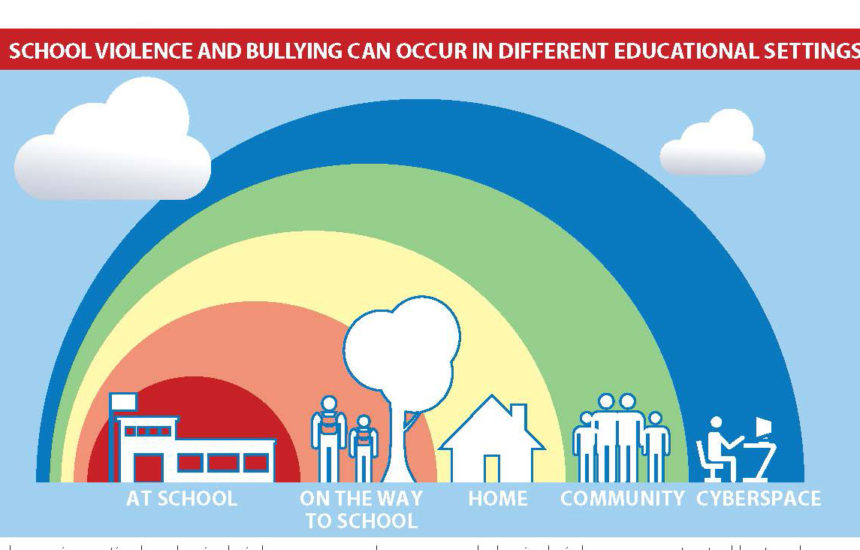Violence Against Children and Youth


School violence and bullying occurs worldwide and affects millions of children and youth. It is estimated that 246 million children and adolescents experience school violence and bullying in some form every year. School violence encompasses physical violence, including corporal punishment, psychological violence, sexual violence, and bullying.
According to a report by  UNESCO, “School Violence and Bullying: Global Status Report,” 34% of students reported being bullied in the previous month, with 8% reporting that they are bullied daily. Drawing upon data from 19 low- and middle-income countries, the report recommends priority actions to address both school violence and bullying, such as promoting awareness, strengthening leadership, and improving data and evidence.
UNESCO, “School Violence and Bullying: Global Status Report,” 34% of students reported being bullied in the previous month, with 8% reporting that they are bullied daily. Drawing upon data from 19 low- and middle-income countries, the report recommends priority actions to address both school violence and bullying, such as promoting awareness, strengthening leadership, and improving data and evidence.
Any form of violence or bullying in school can seriously harm children’s and adolescents’ mental and emotional health, and have a negative impact on students’ learning. Data from TIMSS 2015 show that grade 4 students who reported being bullied weekly at school scored 36 points lower in mathematics compared with those who report that they had almost never been bullied.
Existing cross-national and selected national surveys on school-related violence are also the subject of a recently published policy paper. UNESCO’s Global Education Monitoring (GEM) Report “Let’s Decide How to Measure School Violence” suggests how to improve our understanding of the global prevalence of school-related violence. The policy paper surveys current national methods of assessing school-related violence (TIMSS, TERCE, PISA, SACMEC, and GSHS, etc.) and provides options for improving the global evidence base. It highlights the issue that national surveys covering school-related violence are almost never comparable because they are not built on the same methodologies and questions. The policy paper stresses that comparison is difficult because of differing definitions of the type of violence, failures to capture gender dimension of school-related violence, time issues (how often the violence occurs), and age (different surveys cover different age groups).
Evidence about the global prevalence and trends of school-related violence is lacking, and to ensure that reliable data is collected, action is needed to bridge differences between the various monitoring methods. Measuring and monitoring school-based violence is important. No nation can achieve inclusive and quality education if students experience violence or bullying in school.
For more information:
Trends in International Mathematics and Science Study (TIMSS) 2015: https://nces.ed.gov/timss/timss15.asp
United Nations Educational, Scientific and Cultural Organization. (2017). School Violence and Bullying: Global Status Report. Paris, France: UNESCO. Download the report here.
United Nations Educational, Scientific and Cultural Organization. (2017). Let’s decide how to measure school violence, Policy Paper 29. Paris, France: Global Monitoring Report (GEM) United Nations Girls’ Education Initiative and UNESCO. Download the report here.